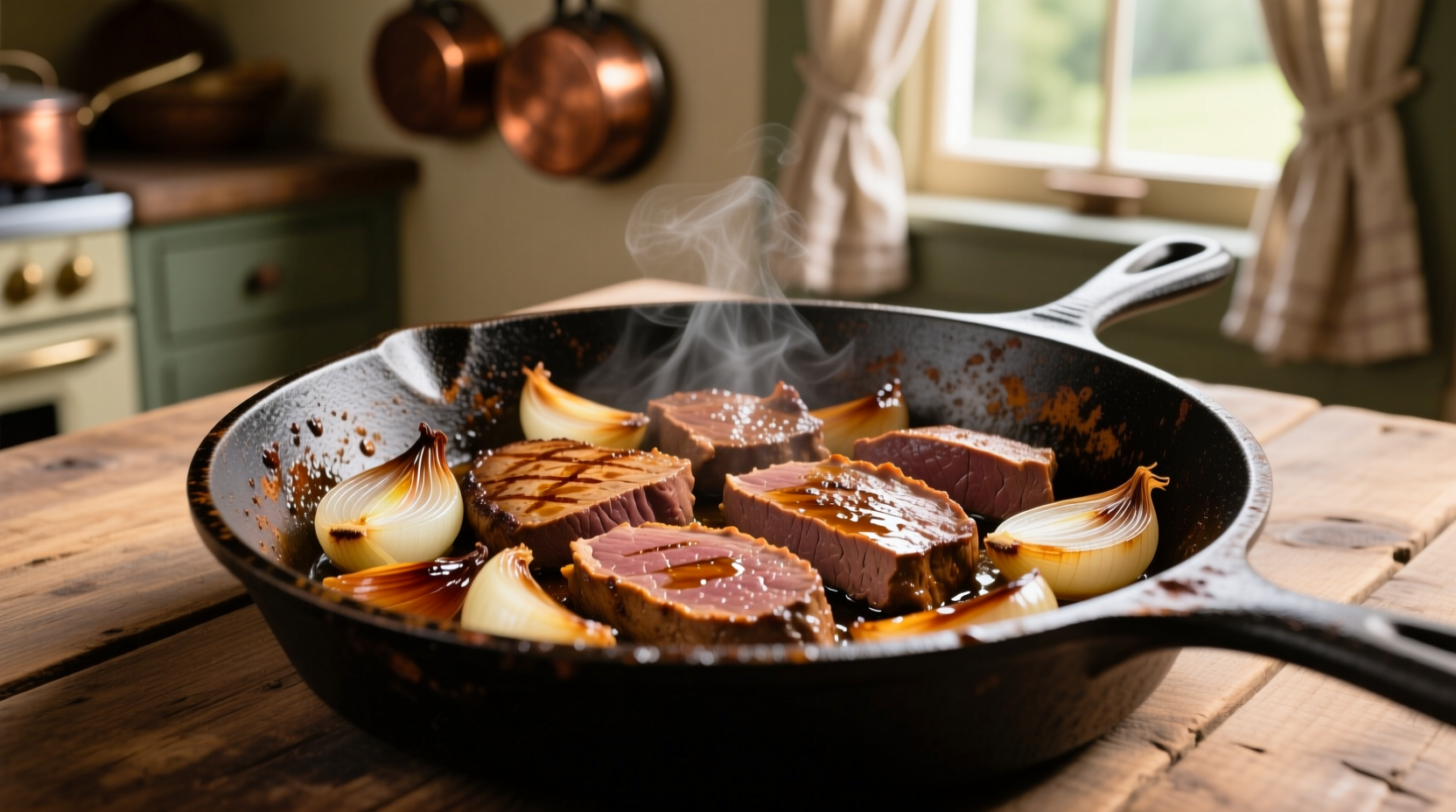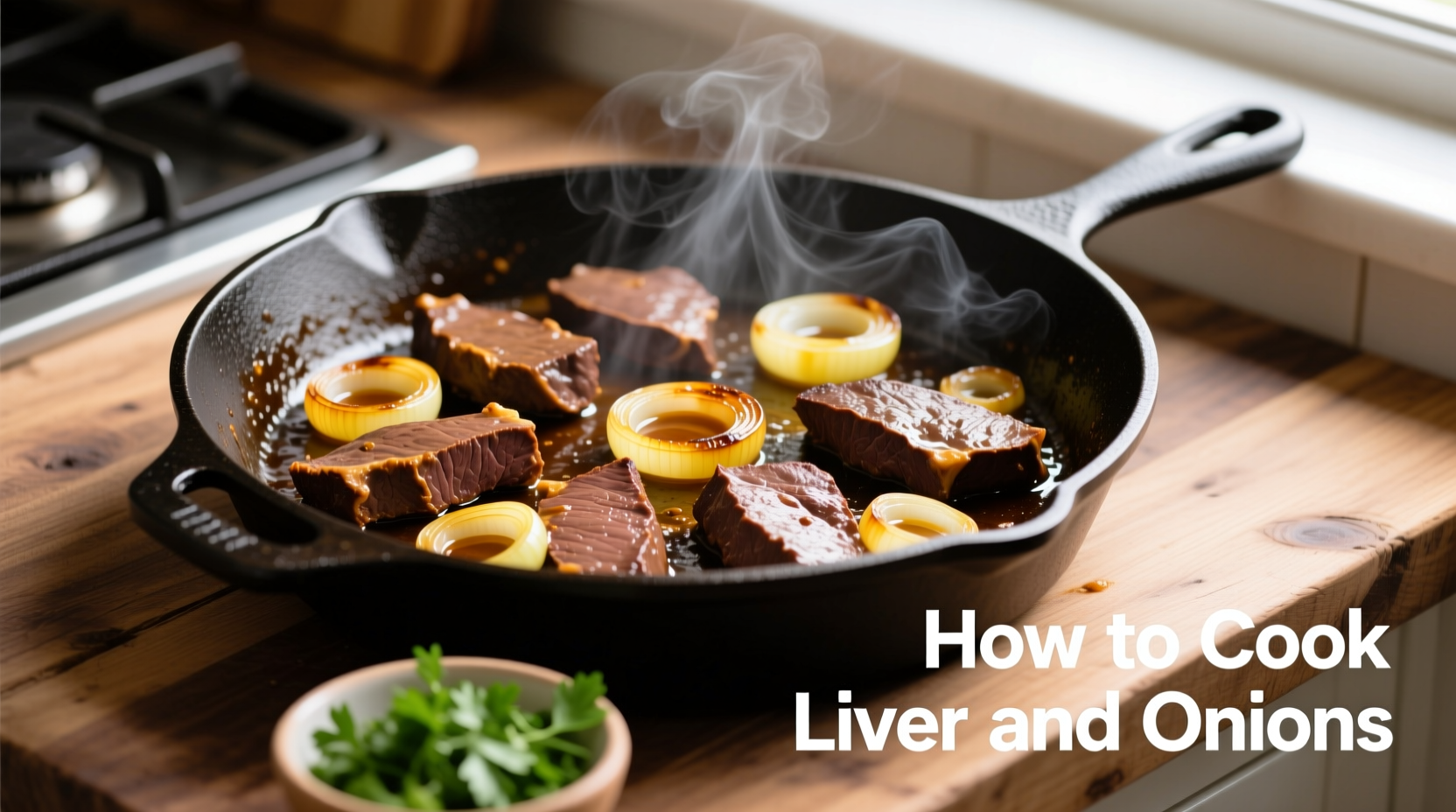Perfectly cooked liver and onions should be tender, flavorful, and free from bitterness. The key is proper preparation (soaking in milk), precise cooking time (3-4 minutes per side for thin slices), and using the right cut of liver (beef or calf liver works best). This classic method yields restaurant-quality results every time.
Master the Art of Cooking Liver and Onions: A Foolproof Guide
Many home cooks avoid liver because of its reputation for toughness and bitterness. But when prepared correctly, liver and onions transforms into a rich, satisfying dish with a delicate texture and balanced flavor. As a professional chef with extensive experience in classic American and European cuisine, I've perfected this technique through years of practice in both high-end restaurants and home kitchens.
Why This Method Works Every Time
The secret to tender liver isn't complicated—it's about understanding the science behind the cooking process. Liver contains high levels of protein that quickly become tough when overcooked. By controlling three critical factors—preparation, temperature, and timing—you'll consistently achieve perfect results:
- Milk soaking neutralizes bitterness and tenderizes the meat
- High-heat searing creates a flavorful crust while keeping the interior moist
- Precise timing prevents the common mistake of overcooking
Essential Ingredients and Equipment
Quality ingredients make the difference between ordinary and exceptional liver and onions. You'll need:
- 1 pound fresh calf liver or beef liver (calf liver is milder)
- 2 large yellow onions, thinly sliced
- 1 cup whole milk for soaking
- 3 tablespoons unsalted butter
- 2 tablespoons all-purpose flour
- 2 tablespoons olive oil or bacon fat
- Salt and freshly ground black pepper to taste
- 1 tablespoon fresh thyme leaves (optional)
- 1 tablespoon Worcestershire sauce
Equipment note: Use a heavy cast-iron or stainless steel skillet for optimal heat distribution and browning.
| Liver Type | Soaking Time | Cooking Time | Flavor Profile |
|---|---|---|---|
| Calf Liver | 30-60 minutes | 3-4 minutes per side | Mild, delicate |
| Beef Liver | 60-90 minutes | 4-5 minutes per side | Stronger, richer |
| Chicken Liver | 20-30 minutes | 2-3 minutes per side | Earthy, tender |
Step-by-Step Cooking Process
Preparation: The Foundation of Success
Proper preparation makes all the difference in how to cook liver and onions without bitterness:
- Soak the liver: Place liver slices in a bowl with enough milk to cover. Refrigerate for 30-90 minutes (longer for beef liver). This critical step neutralizes bitterness and tenderizes the meat.
- Pat dry thoroughly: Remove liver from milk and pat completely dry with paper towels. Moisture prevents proper browning.
- Slice correctly: Cut into 1/4-inch thick slices against the grain. Thinner slices cook more evenly and stay tender.
- Season: Lightly dust both sides with salt, pepper, and flour just before cooking.
Cooking: Precision Timing for Perfect Results
Follow these steps for how to make liver and onions with the ideal texture:
- Preheat your skillet: Heat oil or bacon fat in a heavy skillet over medium-high heat until shimmering but not smoking (about 350°F).
- Sear the liver: Add liver in a single layer without crowding. Cook for 3-4 minutes per side for calf liver (4-5 for beef liver) until golden brown but still slightly pink inside. Do not overcook—this is the most common mistake when learning how to cook liver and onions.
- Remove liver: Transfer to a plate and tent with foil.
- Cook the onions: In the same skillet, add butter and onions. Cook over medium heat for 15-20 minutes until deeply caramelized, stirring occasionally.
- Finish the dish: Return liver to the skillet with onions, add Worcestershire sauce and thyme. Cook for 1-2 minutes to heat through and combine flavors.

Avoid These Common Liver Cooking Mistakes
Understanding these pitfalls will improve your results when you cook liver and onions:
- Skipping the milk soak: This leads to bitter, tough liver. The USDA Food Safety and Inspection Service confirms that milk helps neutralize strong flavors in organ meats (USDA FSIS).
- Overcrowding the pan: Causes steaming instead of searing. Cook in batches if necessary.
- Overcooking: Liver becomes rubbery past 140°F internal temperature. Use a meat thermometer for accuracy.
- Using the wrong cut: Thick slices cook unevenly. Stick to 1/4-inch thickness for consistent results.
Serving Suggestions and Variations
Serve your perfectly cooked liver and onions with these classic pairings:
- Over mashed potatoes or egg noodles to soak up the flavorful pan juices
- With a side of steamed green beans or roasted Brussels sprouts
- Accompanied by a crisp apple salad for contrast
- With a splash of apple cider vinegar for brightness
Variation tip: For a Southern-style version, add 1/4 cup of buttermilk to the soaking liquid and finish with a dash of hot sauce.
Storage and Reheating Guidelines
While liver and onions is best served fresh, leftovers can be stored properly:
- Refrigerate in an airtight container for up to 2 days
- Reheat gently in a skillet over low heat with a splash of broth
- Avoid microwaving: This makes liver tough and rubbery
- Do not freeze—texture deteriorates significantly
Frequently Asked Questions
How do I prevent liver from becoming tough when cooking?
The key to tender liver is proper preparation and precise cooking time. Soak liver in milk for 30-90 minutes to tenderize, slice to 1/4-inch thickness, and cook for only 3-5 minutes per side depending on type. Overcooking is the primary cause of toughness—use a meat thermometer and remove liver at 140°F internal temperature.
What's the best type of liver for beginners learning how to cook liver and onions?
Calf liver is the best choice for beginners because it has a milder flavor and more delicate texture than beef liver. It requires less soaking time (30-60 minutes) and cooks faster (3-4 minutes per side), making it more forgiving for those learning how to cook liver and onions properly.
Can I make liver and onions without soaking in milk?
While you can skip the milk soak, it's not recommended for how to cook liver and onions successfully. Milk neutralizes bitterness and tenderizes the meat. If avoiding dairy, use buttermilk or a mixture of water with 2 tablespoons of vinegar or lemon juice as an alternative soak for similar results.
How do I know when liver is properly cooked?
Properly cooked liver should be golden brown on the outside with a slightly pink interior. Use a meat thermometer to check—140°F is ideal. When sliced, it should be moist but not bloody. Overcooked liver becomes tough and dry with a grayish color throughout. For thin slices (1/4-inch), this typically takes 3-5 minutes per side depending on liver type.
What are the best onions to use for traditional liver and onions?
Yellow onions are the classic choice for how to cook liver and onions as they caramelize beautifully and provide the perfect balance of sweetness and sharpness. For variation, try using half yellow and half red onions for added complexity, or substitute 1-2 shallots for part of the onions for a more delicate flavor profile that complements the liver without overpowering it.











 浙公网安备
33010002000092号
浙公网安备
33010002000092号 浙B2-20120091-4
浙B2-20120091-4